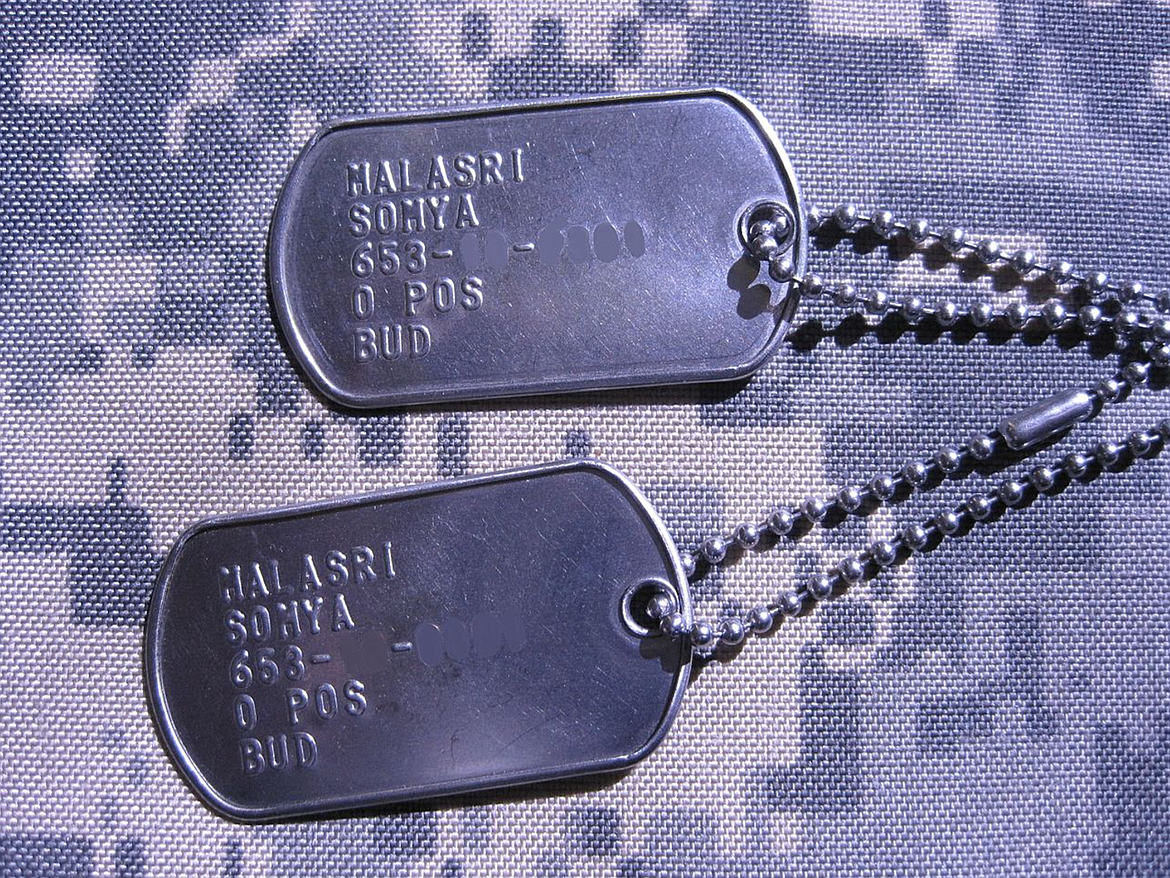THE VETERANS' PRESS: 'Dog Tag Tales'
My best friend recently got a brand new necklace and pendant. OK … she's my dog … and she got a new collar and dog tag. But it made me wonder … where are MY dog (identification) tags? We all received them during basic training. Do you still have your tags? Where are they? And why are they called "dog tags?"
The Army Historical Foundation says the term "dog tag" was first coined by newspaper magnate William Randolph Hearst. In 1936, Hearst wanted to undermine support for President Franklin D. Rosevelt's New Deal. He had heard the newly formed Social Security Administration was considering giving out nameplates for personal identification. According to the SSA, Hearst referred to them as "dog tags" similar to the identification tags used in the military. Other rumored origins of the nickname include World War II draftees calling them dog tags because they claimed they were treated like dogs, and the metal tag looked similar to those on a dog's collar.
Military identification tags date back to the Civil War. Soldiers were afraid no one would be able to identify them if they died — they were terrified of being buried in unmarked graves. Some marked their clothing with stencils or pinned on paper tags. According to the Marine Corps, some men carved their names into chunks of wood strung around their necks. Others bought engraved metal tags from non-government vendors who followed the armies during the war. Historical records show that in 1862, a New Yorker named John Kennedy offered to make thousands of engraved disks for soldiers, but the War Department declined.
At the end of the Civil War, more than 40% of the Union Army's dead were unidentified. This outcome validated the concern about identification. The first official request to issue ID tags to service members came in 1899 at the end of the Spanish-American war. Army Chaplain Charles C. Pierce was in charge of the Army Morgue and Office of Identification in the Philippines. He recommended the Army outfit all soldiers with circular disks to identify those who were severely injured or killed in action.
By December 1906, the Army put out a general order that aluminum disc-shaped ID tags be worn by all soldiers. The half-dollar size tags were stamped with a soldier's name, rank, company and regiment or corps, and were attached to a cord or chain that went around the neck. Tags were worn under the field uniform. The order was modified in July 1916 when a second disc was required to be suspended from the first by a short string or chain. The first tag would remain with the body, while the second tag was for service record keeping. Tags were given to enlisted men, but officers had to buy them.
Eventually, all United States combat troops were required to wear tags, which then included each man's Army-issued serial number. Toward the end of World War I, religious symbols were added to the tag — C for Catholic, H for Hebrew and P for Protestant — but those markings didn't remain after the war.
The Navy didn't require ID tags until May 1917 and were made from nickel alloys with the letters U.S.N. etched on them. Enlisted member tags included date of birth and enlistment, while officers' included their date of appointment. The Navy also had an etched print of each sailor's right index finger on the back, which was meant to safeguard against fraud, accident or misuse.
According to the Naval History and Heritage Command, the ID tags weren't used between World War I and World War II but were reinstated in May 1941 with the etching process replaced with mechanical stamping. Meanwhile, the Marines had been required to wear ID tags since late 1916 and theirs were a mix of Army and Navy styles.
By World War II, military ID tags were considered an official part of the uniform and had evolved into the size and shape they are today — a rounded rectangle of nickel-copper alloy. Each was mechanically stamped with name, rank, service number, blood type and religion, if desired. An emergency notification name and address were initially included, but were removed by the end of the war, as was the "T" which indicated a tetanus vaccination. At one point for Marines, the person's gas mask size was included on the tags. During World War II, Navy tags no longer included the fingerprint.
Present day military identification tag information includes name, blood type, Social Security number and religious preference. It may also show the wearer's specific branch of service. There may also be tags for Special Forces like the Army Rangers, Green Berets, Delta Force, Navy Seals and so on. When a service member requires special medical attention, they may be issued an additional red tag with information much like a medical "bracelet" which alerts doctors and responders.
For hundreds of years, American warfighters desired to be properly identified should they fall in battle. This ensured dignified processing of our fallen warriors. So, despite technological advancements including the ability to use DNA to identify remains, dog tags are still issued to service members today.
What is etched onto a dog tag seems less important than the symbol it represents. Their sacrifice and service are etched into our military culture and the hearts of grateful Americans.

